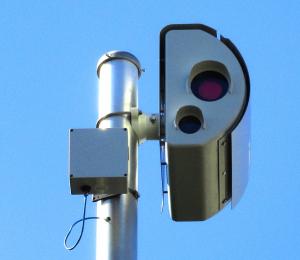Why Install Red-Light Cameras?
The Red Light Running Problem
Traffic crashes are the single most significant cause of preventable death and injury in North America. In 2007 in the U.S., almost 900 people were killed and an estimated 153,000 were injured in crashes that involved red light running.
Public costs exceed $14 billion per year, and more than half of the deaths in red light running crashes are other motorists and pedestrians. There is no doubt that red light runners are dangerous drivers who irresponsibly put others at risk. In America's cities ― where too often the yellow light has come to symbolize "hurry up" instead of "slow down" ― red light running is the leading cause of all urban automobile crashes.
The American public recognizes the problem, is deeply concerned about red light running and supports the use of red light cameras. A 2002 nationwide survey sponsored by the National Highway Traffic Safety Administration and conducted by the Gallup Organization found that 75 percent of drivers favored the use of red light cameras. Most Americans (96 percent) are afraid of being hit by a red light runner, but nearly one in five admit to running a red light in the last ten intersections. The leading excuse given for red light running was neither frustration nor road rage; it was "being in a hurry."
Red Light Camera Facts
Red light cameras, used by more than 400 U.S. communities in 25 states and the District of Columbia, have led to significant decreases in intersection violations and crashes, deaths and injuries. At the same time they have saved millions in societal costs. A U.S. Federal Highway Administration-funded study estimated total societal cost reductions from red light camera programs in seven U.S. cities to be over $14 million per year, or more than $38,000 for each studied red light camera location (Safety Evaluation of Red-light Cameras, 2005).
Below are some examples of the impact of red light cameras.
• In New Orleans, LA, red light cameras led to an 85% drop in red light running. (New Orleans press release, 2.20.09).
• In Council Bluffs, IA, red light cameras led to a 90% reduction in red light running crashes. Cameras led to a 40% reduction in red light running crashes in Davenport (The Effectiveness of Iowa's Automated Red Light Running Enforcement Programs, 2007).
• A Texas A&M Texas Transportation Institute study found traffic crashes at red light camera locations across Texas decreased by approximately 30%. Right angle crashes, which usually produce the most deaths and injuries, dropped by 43% ("Analysis On The Effectiveness Of Photographic Traffic Signal Enforcement Systems In Texas," Walden, 2008).
• An Insurance Institute for Highway Safety study of the Philadelphia, PA, red light camera program tracked signal violation rates at intersections before and after extending the yellow light sequence, and again after red light camera enforcement had been in effect for about a year. Lengthening the yellow light reduced signal violations by 36%. The cameras reduced the remaining violations by 96% (“Reducing red light running through longer yellow signal timing and red light camera enforcement: results of a field investigation," Retting, 2007).
• A review of 10 U.S. and international red light camera research studies, conducted by the respected Cochrane Collaboration, found “Red-light cameras are effective in reducing total casualty crashes…. In the best conducted of these studies, the reduction was nearly 30%” (Red-light cameras for the prevention of road traffic crashes, 2005).
• A multi-year study of the red light camera program in Virginia Beach found red light running violations more than tripled after the law permitting the city to use red light cameras was allowed to expire in 2005. Results showed that red light cameras provided a strong deterrent against red light running and that once the cameras were turned off, aggressive drivers returned to their old habits (Dr. Bryan Porter, Old Dominion University, 2007).
• Columbus, OH, saw violations at its first two red light camera intersections drop from 1,684 in March 2006 to 477 in August 2006, a 71% decrease. There was only one crash at the two intersections, which each recorded between 5 and 14 crashes per year before the cameras were installed (The Columbus Dispatch, 9.25.06).
• An Orange County, CA, government report found that one year after red light camera installation, crashes at monitored intersections dropped by 46.7% in Garden Grove, 28.2% in Costa Mesa, 16.2% in Santa Ana, 12.1% in San Juan Capistrano and 5.7% in Fullerton (Red-light Cameras: Automated Traffic Cops in Orange County, Orange County Grand Jury, 2004-2005).
- Taken from the website for the National Campaign to Stop Red-Light Running - www.stopredlightrunning.com

